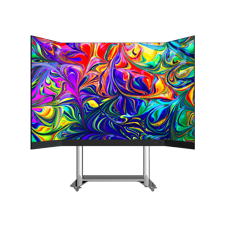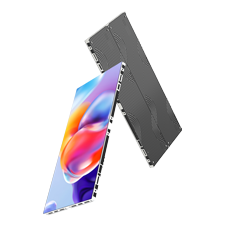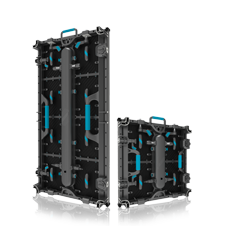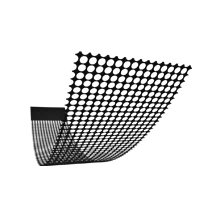By 2023, the Mini/Micro LED display technology has made great breakthroughs after years of hard work, and new products have been frequently launched on the application side. However, Mini/Micro LED is still a few steps away from the other side of success, and some difficulties still need to continue. Search up and down."
Yiwen Technology Ye Guoguang said that at present, whether it is Mini LED or Micro LED, the biggest bottleneck still lies in mass transfer and inspection and repair.
Haimuxing Peng Xinhan pointed out that on the equipment side, Japanese and Korean companies started earlier and their technology is ahead of domestic companies, but the gap is narrowing; but on the material side, the gap between domestic companies and international companies is more obvious. "Material issues not only refer to huge amounts of transfer materials, but also include basic materials that require high precision in equipment materials, such as metal materials such as guide rails and bearings, and sensors. At present, although domestic equipment companies are rising, many basic materials Materials still rely on Japan, the United States, and European countries. Therefore, to develop Mini/Micro LED technology, not only equipment companies need to continuously improve their technical level, but also component and material manufacturers need to make progress together, so that they can truly catch up with and even Catch up with the international advanced level."
It is reported that Hymson has a leading edge in the field of massive bonding equipment. The company mainly uses laser technology for mass bonding of Micro LEDs. Under the condition of relatively stable incoming materials, the yield rate can reach 99.9999%, which is close to the international leading level.
TCL Ji Honglei analyzed two technical routes of COB and POB. He pointed out that the dispute between COB and POB has been going on for many years. In the actual production process, POB has a large application space in Mini LED products with low partitions, while COB is highly respected in Mini LED products with high partitions. The dispute between the two lies in Mini LEDs with 800-1000 partitions. product.
This is mainly because the Mini LED products in this division can adopt both POB and COB technology routes, but the markets they target are different. Take TCL as an example, "Our mid-to-high-end machines all use COB solutions, while mid-range and below products use POB." Therefore, POB products have an advantage in quantity, and COB is the mainstream of future display technology development. direction.
Ji Honglei also introduced the cost reduction modes of the two routes. He said that POB is produced with traditional materials, and the current yield rate is relatively high. In the future, the cost may only be reduced in optical design, and the cost reduction rate is small; COB has a large room for optimization in terms of materials, lenses, and drivers. , the future cost reduction will be relatively large. "It is expected that COB will reduce its price by at least 10% per year, compared to POB, which may only be 2%-3%."
Shen Chen of SAFFLES introduced the company's exploration of Micro LED technology. He said that there are efficiency and yield bottlenecks in the manufacture of red light with quaternary materials, and it is difficult to break through in the field of micro-size. Currently, Saflux adopts the solution of blue light + quantum dots to realize color conversion to produce Micro LEDs, which can improve the yield rate. At the same time, the cost of Micro LED will be greatly reduced, and the difficulty of mass transfer will also be reduced. But the difficulty of this solution lies in the reliability, lifespan, and brightness of quantum dots. Currently, Saffron is actively overcoming these difficulties.
AR: Does Micro LED have to be used?
Despite the advantages of high brightness and high contrast, Micro LED is still in the early stages of development. So, which product will become the fastest application field of Micro LED technology?
TCL Ji Honglei said that from the perspective of application, the chip size of Micro LED is very small. When choosing an application field, enterprises need to consider how big the demand for this chip size is in this field. "I feel that it may be a rigid demand in the AR field, but in the field of large screens, there are now multiple technical routes competing with each other. Whether Micro LED has such a necessity is worth thinking about."
Yiwen Technology Ye Guoguang also agrees with this point of view, but he also pointed out that there are currently multiple solutions for AR design, among which there are Micro OLED, Mini LED backlight, Micro LED, etc. in the choice of display technology, and Micro LED It has not yet been mass-produced, and it can only achieve monochrome at present. It is popular in the market. "I think we should find a way to break through. I am more optimistic about the quantum dot route."
Sai Fulusi Shenchen also believes that Micro LED technology has great room for development in the AR display market, but he also pointed out that the application of Micro LED to the AR market still faces many difficulties. As far as Sapphire itself is concerned, on the one hand, the company focuses on quantum dot Micro LED chip technology and needs to overcome various process bottlenecks; on the other hand, Saflux also needs to make progress together with its partners.
Hongli Display currently mainly focuses on Mini LED, while developing the next-generation display technology Micro LED. Hongli Display Sang Jian pointed out that in the long run, Micro LED is still several years away from industrialization, so the solution of Mini LED backlight with LCD is more suitable for AR/VR products at present.
According to Sang Jian’s analysis, Mini LED backlight technology combined with LCD has the advantages of high resolution and high brightness, while silicon-based OLEDs have insufficient brightness performance, and Micro LED still has technical bottlenecks such as mass transfer. Therefore, when Micro LED technology matures At present, the Mini LED backlight solution still has great advantages in the field of AR/VR. It is reported that at present, Hongli Display's Mini LED VR products have achieved mass production.
Big Screen: Who Will Be the Leader?
In addition to AR, for Micro LED, the large-screen market is also not to be missed, but in actual promotion, the large-screen market is also full of difficulties.
Liard Sun Xuechao said that the current Micro LED product forms and technical routes are very rich. Leyard will break through the cost, efficiency and yield bottlenecks of Micro LED in 2022, and successfully apply Micro LED technology to conventional direct display large screens. He introduced that Leyard adopts MIP technology. On the one hand, this technology can rapidly increase the production capacity of Micro LED. On the other hand, in the field of large size, the yield rate of MIP technology can also meet market requirements.
In terms of specific applications, currently Leyard's Micro LED products can be used not only in TVs, but also in commercial fields, including monitoring screens, conference all-in-one machines, etc. However, Xuechao Sun also pointed out that there is still a long way to go for the popularization of Micro LED in the field of conference all-in-one machines and home TVs.
Among them, in the civilian market, Sun Xuechao also expressed his views on the cost of terminal products. He pointed out that the cost not only needs to be gradually reduced through large-scale applications, but also requires the cooperation of the industrial chain. From the perspective of the cost structure of LEDs, the chip is the most costly link. For example, in products with a pitch below P1.0, the cost of the chip accounts for about 30% to 50%; in addition, the cost of the packaging link is also relatively high. Once the cost of chips and packaging is reduced, and the yield rate and product display effect are continuously improved, the speed at which Mini/Micro LEDs enter the civilian market will be accelerated.
But Peng Xinhan is very confident in the cost reduction of Micro LED. He pointed out that the prices of LCD and OLED technologies were high in the early stages of launch, but when the technologies matured and the yield, production capacity, and market popularity were all improved, the prices dropped rapidly. "Micro LED also follows this rule. I personally think that its cycle may be a little shorter than that of OLED. This is mainly because the investment required for OLED production lines is much higher than that of Micro LED production lines. Therefore, the equipment for Micro LED production lines The depreciation rate will be faster, the price reduction rate will be faster, and Micro LED technology will be popularized soon."
He also said that OLED and Micro LED technologies will coexist in the future, and the two sides will have a division of labor in the application field. Among them, OLED can be applied in mobile phones, consumer electronics or small household screens, while the application market of Micro LED is ultra-large and ultra-small screens.
Quotes: When will the demand and the market "go both ways"?
In 2022, the domestic LED display market demand, including LED event display, will decline significantly, and the performance of the LED display industry will not be as good as expected. However, coming to 2023, the market has a new trend of change.
Hongli Display Sang Jian pointed out that there will be no obvious changes in demand in the first quarter of 2023, but it can be felt that the degree of market interest is gradually increasing. However, the crisis still exists, among which the slow recovery of overseas economies and the conflict between Russia and Ukraine are all uncertain factors in the development of LED display technology. Despite this, Sang Jian is still optimistic about the development of Mini/Micro LED. He believes that this field will develop better this year, and the third quarter is expected to become an inflection point for changes in the Mini/Micro LED market.
Leyard Sun Xuechao is full of confidence in the future development of the industry. He pointed out that at present, opportunities and challenges coexist, and the opportunities far outweigh the challenges. "The development of the LED industry for so many years has not been smooth sailing, nor has it continued to grow. The industry sometimes peaks and sometimes troughs, especially in the troughs, it is necessary to treat technology and the market carefully."
In terms of market conditions, Sun Xuechao said that in the first quarter of 2023, the LED industry as a whole will be relatively sluggish, and most of the company's performance will be unsatisfactory. However, he said that many new projects are currently in the communication stage, and the market is expected to improve in the second half of the year.
He also pointed out that different technical routes and different products will have different performances in the market. "In terms of products, such as all-in-one machines, vp/XR, etc., and business models such as ToB and ToC, there may be better performance. .The LED industry has been groping forward according to market conditions.”
He also pointed out that enterprises should continue to innovate and break through, and open up room for growth by developing new application fields and increasing product added value.
Sai Fulusi Shenchen explained from a financial point of view that in the short term, governments around the world are working hard to develop the economy, and investment has become an important means. As the infrastructure of the digital economy, it can be predicted that this year will have a bright future; in the long run , Display is a part of informatization and a carrier of information interaction. No matter how the technological field develops, people's demand for new displays will always exist.
TCL released the world's first Mini LED TV in 2019, and has launched new Mini LED TV products every year. Regarding the market situation, TCL Ji Honglei said that the TV market is currently shrinking, and may even be shrinking in the past two or three years. However, with the development of Metaverse and artificial intelligence, traditional TVs may develop more new application scenarios to provide users with new experiences, which in turn will drive the recovery of the TV market.
Epilogue
Although the road is long, it will come soon; although it is difficult, it will be done if it is done - the same is true for Mini/Micro LED.
At present, there are still many controversies in terms of Mini/Micro LED technology, but it is also these controversies that urge companies to keep exploring, keep moving forward, and find better solutions.
In terms of the market, despite the current gloom, there is hope ahead. In the long run, TrendForce continues to be optimistic about the development of the LED display market. Driven by small-pitch and Mini LED display products, it is expected that the market size will grow to US$13 billion in 2026. At that time, the relevant enterprises, including China LED display supplier, will be rewarded for their hard work today.



 SphereSeries
Customized
More
SphereSeries
Customized
More
 CubeSeries
Customized
More
CubeSeries
Customized
More
 CircleSeries
Customize
More
CircleSeries
Customize
More
 FootballSeries
Customize
More
FootballSeries
Customize
More
 WingSeries
Customize
More
WingSeries
Customize
More
 Umbrella-shapeSeries
Customize
More
Umbrella-shapeSeries
Customize
More
 Face-shapedSeries
Customize
More
Face-shapedSeries
Customize
More
 Ribbon-ShapedSeries
Customize
More
Ribbon-ShapedSeries
Customize
More
 Water Drop-shapedSeries
Customize
More
Water Drop-shapedSeries
Customize
More
 IFSeries
Indoor Fixed
More
IFSeries
Indoor Fixed
More
 BMSeries
640x480mm
More
BMSeries
640x480mm
More
 QSSeries
More
QSSeries
More
 Wall PROSeries
1000/750/500x250mm/1000x500mm
More
Wall PROSeries
1000/750/500x250mm/1000x500mm
More
 BM ProSeries
640x480mm
More
BM ProSeries
640x480mm
More
 FASeries
Front Access & Back Access
More
FASeries
Front Access & Back Access
More
 OFSeries
Outdoor Fixed
More
OFSeries
Outdoor Fixed
More
 FSSeries
960x960mm
More
FSSeries
960x960mm
More
 STSeries
1000x500mm
More
STSeries
1000x500mm
More
 LKSeries
820x1830mm
More
LKSeries
820x1830mm
More
 CornerSeries
More
CornerSeries
More
 FMSeries
1000x1000mm
More
FMSeries
1000x1000mm
More
 FS PROSeries
960x960mm
More
FS PROSeries
960x960mm
More
 FM PROSeries
800x900mm, 800x1200mm
More
FM PROSeries
800x900mm, 800x1200mm
More
 OFRSeries
Outdoor Fixed
More
OFRSeries
Outdoor Fixed
More
 XTSeries
X -- 500x500x80mm T-- 500x1000x80mm
More
XTSeries
X -- 500x500x80mm T-- 500x1000x80mm
More
 TSeries
500x1000mm
More
TSeries
500x1000mm
More
 V & HSeries
V -- 500x500mm H -- 500x1000mm
More
V & HSeries
V -- 500x500mm H -- 500x1000mm
More
 S & KSeries
500x500mm, 500x1000mm
More
S & KSeries
500x500mm, 500x1000mm
More
 L&F PROSeries
L Pro -- 500x500mm F Pro -- 500x1000mm
More
L&F PROSeries
L Pro -- 500x500mm F Pro -- 500x1000mm
More
 MSeries
500x500mm
More
MSeries
500x500mm
More
 TGC-RSeries
500x1000mm
More
TGC-RSeries
500x1000mm
More
 L-COB1.9Outdoor
500x500mm
More
L-COB1.9Outdoor
500x500mm
More
 COBSeries
600x337.5mm
More
COBSeries
600x337.5mm
More
 HDSeries
400x300mm
More
HDSeries
400x300mm
More
 CLSeries
500x500mm
More
CLSeries
500x500mm
More
 U ProSeries
600x337.5x27.5mm
More
U ProSeries
600x337.5x27.5mm
More
 PMSeries
960x960mm
More
PMSeries
960x960mm
More
 PM PLUSSeries
1600 x 900 x 98mm
More
PM PLUSSeries
1600 x 900 x 98mm
More
 TGCSeries
1000x500mm
More
TGCSeries
1000x500mm
More
 TGCGuide
More
TGCGuide
More
 TPosterSeries
1000 X 2000mm
More
TPosterSeries
1000 X 2000mm
More
 ASeries
816x384mm/800x400mm
More
ASeries
816x384mm/800x400mm
More
 HIRSeries
1000x250mm, 1500x250mm
More
HIRSeries
1000x250mm, 1500x250mm
More
 FloorSeries
500x1000mm
More
FloorSeries
500x1000mm
More
 FLOOR PLUSSeries
500x500mm
More
FLOOR PLUSSeries
500x500mm
More
 Floor RSeries
500x500mm
More
Floor RSeries
500x500mm
More
 FlexSeries
Customized
More
FlexSeries
Customized
More
 FLEX ColumnSeries
Customized
More
FLEX ColumnSeries
Customized
More
 SPosterSeries
Customized
More
SPosterSeries
Customized
More
 Advertising Media DOOH Glass Wall Billboard Architecture
More
Advertising Media DOOH Glass Wall Billboard Architecture
More
 Rental Stage Event Entertainment Concert Exhibition
More
Rental Stage Event Entertainment Concert Exhibition
More
 Control Room Broadcasting Studio Conference
More
Control Room Broadcasting Studio Conference
More
 Football Soccer Basketball Baseball Hockey
More
Football Soccer Basketball Baseball Hockey
More
 Retail Property Shopping Mall Street Commercial
More
Retail Property Shopping Mall Street Commercial
More
 Religion House for Worship Church Auditorium
More
Religion House for Worship Church Auditorium
More
 Cylinder Round Ring Square Column Rectangle 90°
More
Cylinder Round Ring Square Column Rectangle 90°
More
 Cloud Cluster 4G WiFi USB APP Control
More
Cloud Cluster 4G WiFi USB APP Control
More
 Front magnet Front Open Double Sided Front Installation
More
Front magnet Front Open Double Sided Front Installation
More
 How to Install LED Display with Structure Frame
More
How to Install LED Display with Structure Frame
More
 Sphere Cube Triangle Ceiling Tunnel Creative
More
Sphere Cube Triangle Ceiling Tunnel Creative
More
 LEDFUL Naked Eye 3D -- DOOH New Style
More
LEDFUL Naked Eye 3D -- DOOH New Style
More
 LEDFUL BEVEL Series Makes More Possibilities
More
LEDFUL BEVEL Series Makes More Possibilities
More
 LEDFUL Taxi Top Bus Cars Vehicle Advertising LED Display
More
LEDFUL Taxi Top Bus Cars Vehicle Advertising LED Display
More









































































